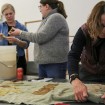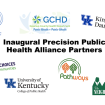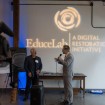Regeneration Bonus: Ashley Seifert
Five years ago, biologist Ashley Seifert began to look at a remarkable species: African spiny mice. "What’s sort of phenomenal is that they’re able to regenerate complex tissue structures," says Seifert.
"So they can regenerate pieces of their skin that includes hair follicles and sebaceous glands, which are associated with the underlying dermis, the structural component, which gives it strength. And then in the ears, amazingly, they can regenerate cartilage. If you talk to an orthopedic surgeon he’ll tell you that would be a huge advance if we could figure out how to regenerate cartilage in a mammal since we don’t have any way to do that right now.
"In our spiny mice we punch a hole through the ear here and then we use that as our model to watch regeneration. We reconstruct that process through these pictures of the tissue as it regenerates."
Seifert's research is taking him and postdoctoral scholar Tom Gawriluk to Kenya for the summer. They will divide their time between trapping spiny mice in the wild and working with colleagues from the University of Georgia and University of Nairobi.
Seifert says, "I was funded by NSF and the International Office of Science and Engineering to go back and explore this hypothesis that there’s a bias in regenerators towards innate immunity and innate immune responses, where animals that can’t regenerate tend to have a bias towards adaptive immunity and pro-inflammatory molecules."
Tom Gawriluk says, "What we are expecting is that because the spiny mouse can heal its skin fully, is that they have a very robust innate immunity because we know that at least in other mammals, adaptive immunity inhibits healing and it causes more scar formation. Hopefully, this is going to give broader impact in terms of skin healing just in general for mammals to be able to heal a little bit better after we get cut or burned or something like that."
Seifert says, "We also try to think about that in a clinical regenerative medicine context. So how can some of these discoveries or advances that we make potentially inform our development of new therapies to help humans."
Learn more about the unofficial regeneration “cluster” of researchers at UK.


